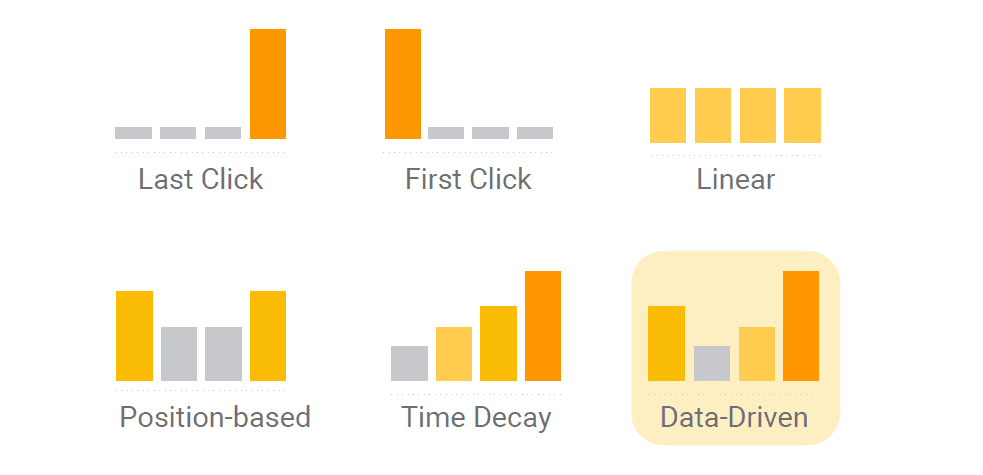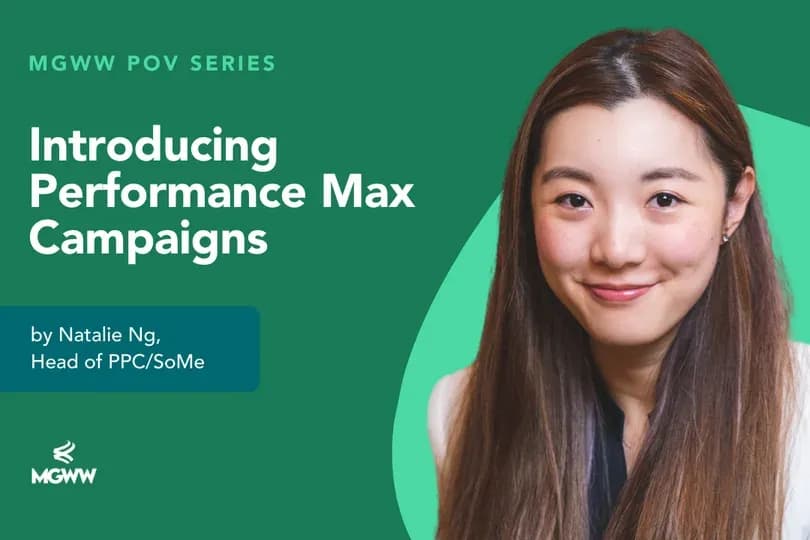When it comes to paid advertising campaigns, marketers need to keep track of who has clicked or interacted with a particular ad. In the past, this was done by giving all the credit for a conversion to the very last ad a customer interacted with. This was known as the Last-click attribution model, and it has remained the default for years.
Recently though, Google started letting marketers know that it would move away from the Last-click attribution model and switch instead to a data-driven attribution (DDA) model. This meant that all new conversion actions in Google Ads would be changed as well.
But why would Google implement this? According to the search engine, it was primarily done as a result of changing privacy landscapes, as well as to more accurately understand how marketing touchpoints can contribute to a conversion.
Here, we discuss the changes in the attribution model, how it differs, and what marketers should be aware of when making the switch.
What is an attribution model
An attribution model is the criteria that determine how and what the credit for conversions and sales should be assigned to. These models help marketers accurately credit actions that lead to a conversion, which is a great way of measuring the true success of any PPC campaign. There are six different types of attribution models, which are:
- Last click: What most advertisers are using to measure their campaigns. This gives all the credit for a conversion to the last ad and corresponding keyword a customer clicked. However, it may also ignore other interactions customers may have had along the way.
- First click: This is the opposite of the last click model. This model credits a conversion to the first ad and the corresponding keyword a user has engaged with.
- Time-decay: This model credits a conversion to ad interactions that happened near the time of the conversion taking place.
- Linear: It spreads the credit of a conversion evenly across all touchpoints involved in a particular customer’s path.
- Position-based: This one splits the credit of a conversion – 40% goes to each of the first and last clicks, with the remaining 20% to other interactions.
- Data-driven: This model credits every single conversion in a different way. As its name suggests, it looks at a variety of data that encompasses each conversion that takes place.

How does DDA differ from others
There are a few differences between the DDA and other attribution models. Data-driven attribution bases the credit for conversions on how people engage with your ads. This model uses data from your Google Ads account to identify which keywords, ads and campaigns have the greatest impact towards your business goals.
This also includes your Search (and Shopping), Display ads, and YouTube. In a way, the model gives a more holistic view of your various conversion paths. This is because DDA will still credit certain interactions even if it did not directly yield a completed conversion. Instead, the model looks at various historical data to see whether an interaction is meaningful to you. The model will then compare the paths of customers who converted versus those who did not.
Through analysing this data, DDA can then find patterns in behaviours that will most likely lead to conversions. For instance, you might find certain steps in your conversion process that have a higher probability of leading an interaction to convert. DDA also takes a variety of other factors into account, such as the ad format and the time between an ad interaction and a conversion. DDA will then prioritise and give more credit to these steps, making results more accurate for advertisers.
Moreover, as users are becoming increasingly aware that their data is being used by third parties, DDA respects users’ decisions on how their data should be used. As such, the model has strict regulations against surreptitious techniques like fingerprinting and more that can compromise people’s privacy.
In order to be eligible for DDA, a Google Ads account needs at least 300 conversions and 3,000 ad interactions in supported networks within 30 days. This means this model is often geared towards companies with a high volume of traffic and conversions. Moreover, if your data drops below 2,000 ad interactions or below 200 conversions in 30 days, the DDA model will revert to the Last-click attribution model.
What should marketers be aware of when switching
If you have switched or are thinking about switching to DDA, there are a few things you need to be aware of. One is to frequently compare results using a model comparison tool. Google has its own one in Google Ads. The tool will allow marketers to see the difference in data between attribution models. These differences can then be communicated to your internal team where you can discuss the potential impact of the data provided.
Additionally, when selecting a date range on analysing conversions, you should exclude the most recent weeks. This will let you avoid the effects of time lag. This is because Google Ads reports conversions at the date of an ad interaction. But as non-Last-click attribution models share credit through multiple interactions, which can happen at various times, the time lag in a campaign may increase. If you do change your attribution model from Last-click to DDA, you might see a slight drop in conversions due to time lag. It is recommended marketers also wait until the average number of days to conversion has passed.
Any significant changes in campaigns for clients
Up till now, MediaGroup has only observed a positive impact when it comes to our client’s ad campaign performance level. While we have noticed some conversion shifts among campaigns, there overall seems to be almost the same level of conversions as well as conversion value.
However, we also must keep in mind that reporting data might slightly change due to more accounts opting to use the DDA model.
Finally, we have also discovered that the DDA model works very well with smart bidding. Therefore, going forward, MediaGroup plans to use more smart bidding strategies when executing PPC campaigns for our clients.
Popular categories:
The Memorable Marketing by MediaGroup podcast series interviews leading senior marketers worldwide on all things marketing, campaigns, strategy, building awareness and everything that makes a brand successful.
Join the conversation by leaving your thoughts and questions, and we will be happy to chat with you. If you want to discuss your business marketing strategies in more detail or join our podcast as a guest, please reach out to us at: [email protected]
Latest Insights
Article
Google's Performance Max campaign: what is it and should your brand use it
According to Google, Performance Max (PMax) is an automated and goal-based campaign that lets advertisers access all their Google Ads inventory from a single campaign. Introduced at Google Marketing Live in 2021, its primary objective is to generate leads, in addition to driving online sales and in-store visits without using the Google Merchant Center product feed.
Quarterly marketing insights in our newsletter
We are committed to helping you get the best results in your digital marketing game. Our experts will give you actionable insights and knowledge, based on our experience, to tackle the biggest marketing challenges. Unsubscribe at any time.
Mediagroup Worldwide processes the above information in order to subscribe you to the newsletter. Privacy Policy
